RBA Rate-Cut Pressure Builds as Global Easing Wave Sweeps Closer
This article by Michael Heath for Bloomberg may be of interest to subscribers. Here is a section:
“The key driver for these central banks is increasing downside risks to global inflation and growth,” said Su-Lin Ong, head of Australian economic and fixed-income strategy at Royal Bank of Canada in Sydney. “Canada talked about an insurance cut and pointed at energy, you substitute that in Australia for iron ore and dairy in New Zealand. It’s no coincidence that the commodity nations’ central banks are shifting rapidly in policy assessments.”
Traders are pricing in a 53 percent chance the RBA board will ease by a quarter percentage point at its first meeting of the year Feb. 3, according to swaps data compiled by Bloomberg.
The chance fell to 15 percent Jan. 28 after a report showed faster-than-forecast core inflation in the fourth quarter. The RBA has stood pat at a record-low 2.5 percent since August 2013.
A columnist in Australia’s biggest selling daily newspaper wrote overnight that the Reserve Bank of Australia will cut both its growth and inflation forecasts in its Statement on Monetary Policy to be released Feb. 6, without citing anyone. Terry McCrann predicted that Governor Glenn Stevens will lower rates by a percentage point this year to 1.5 percent.
When central banks worry about how to stock of outstanding debt in their respective countries, the last thing they want is for deflationary or disinflationary forces to take hold. They often view inflation as an aid in reducing the quantity of debt outstanding so we can anticipate that the RBA and RBNZ will cut Interest rates in the not too distant future not least because so many of their trading partners are doing so. The collapse of iron-ore prices and the fact that much of Australia’s natural gas exports are tied to oil represent additional reasons to weaken the currency in order to support prices in local currency terms.
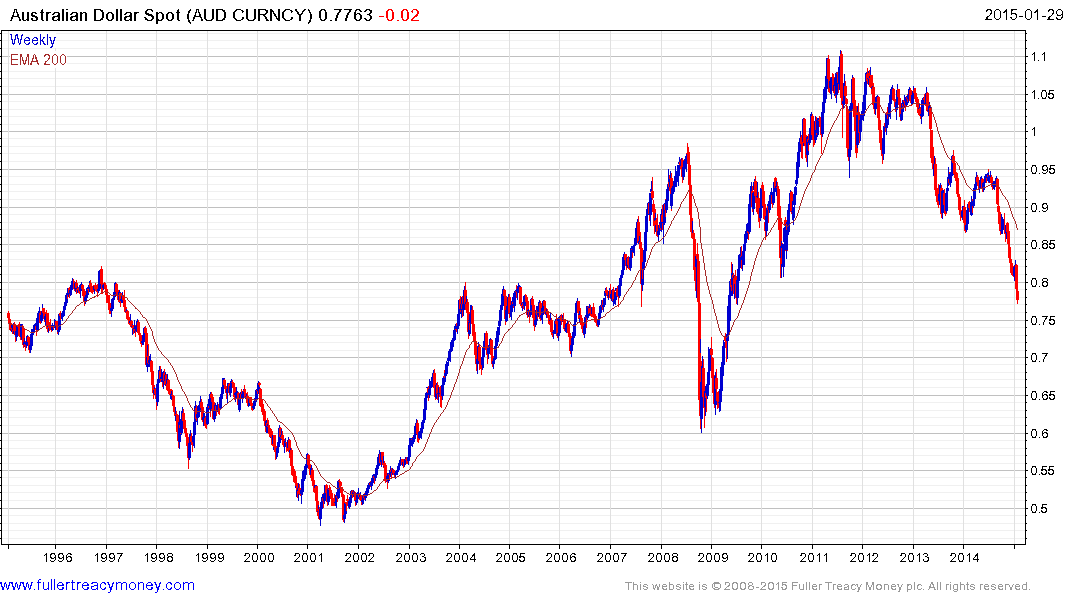
The Australian Dollar completed a Type-3 top against the US Dollar in 2013, completed a first step below it in October and continues to extend its decline. While it is becoming increasingly oversold, a major change of trend would be required to question what could be a secular decline.
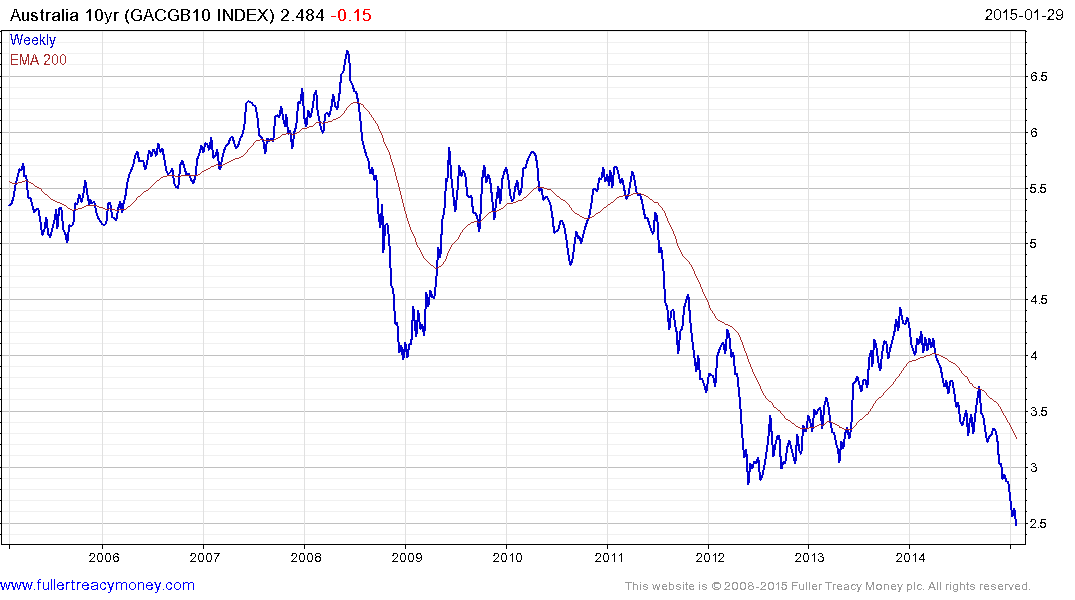
Australian 10-year bonds are still AAA rated and yields continue to compress, hitting a new all-time low this week. A break in the progression of lower rally highs would be required to begin to question the consistency of this downtrend.
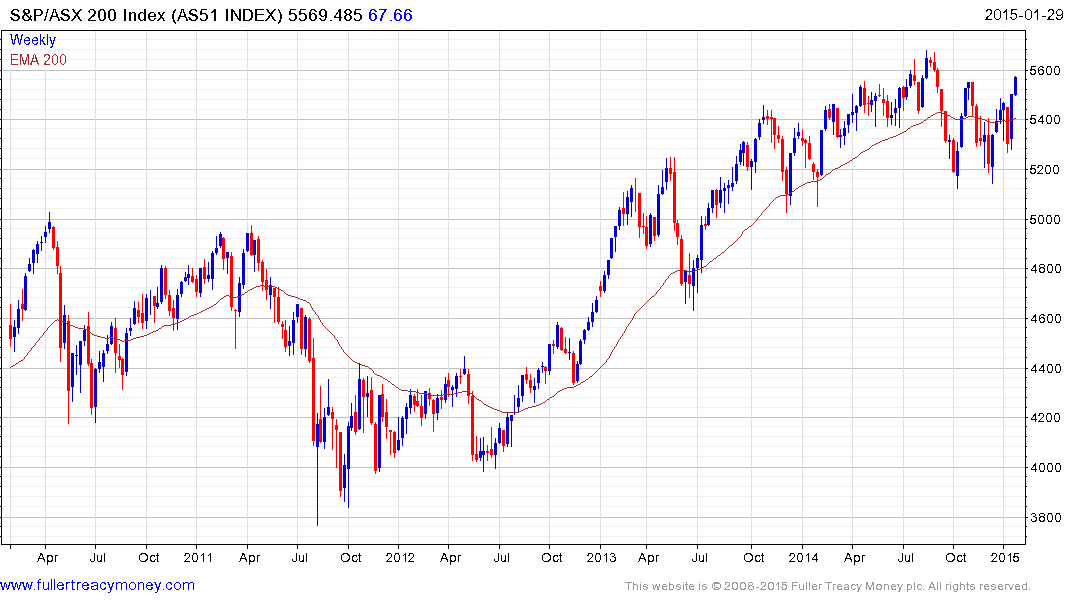
The decline of the Australian Dollar continues to flatter the performance of the S&P/ASX which continues to bounce from the region of the December and October lows. At the Sydney venue for The Chart Seminar last year a point I took time to make was that while international investing was not particularly attractive when the Australian Dollar was strong, it would be much more rewarding as it weakened.
It is worth taking the time to click through the Australian Dollar denominated funds in the Chart Library.
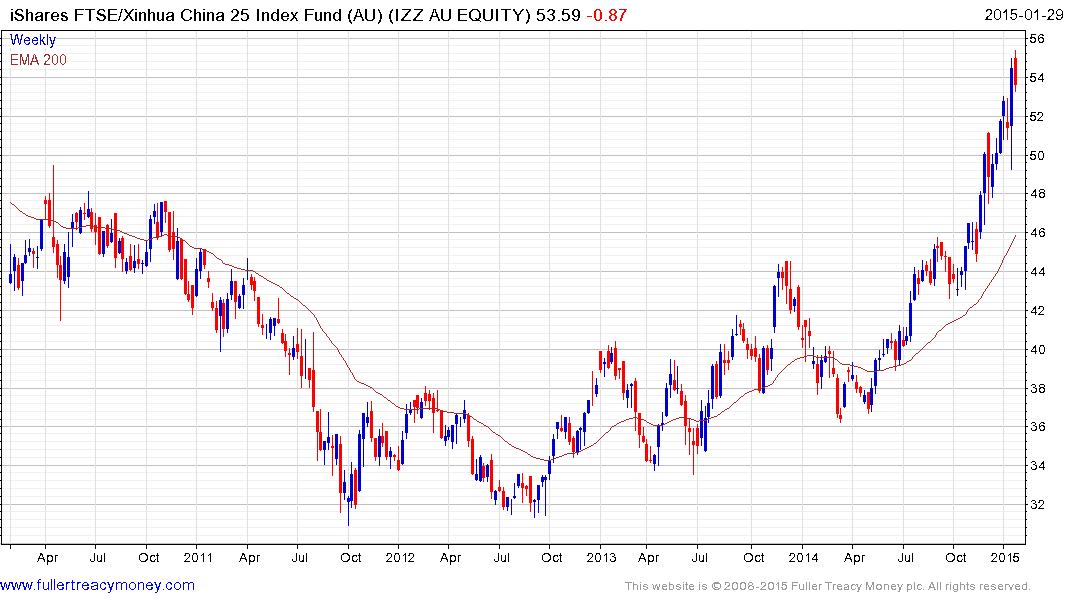
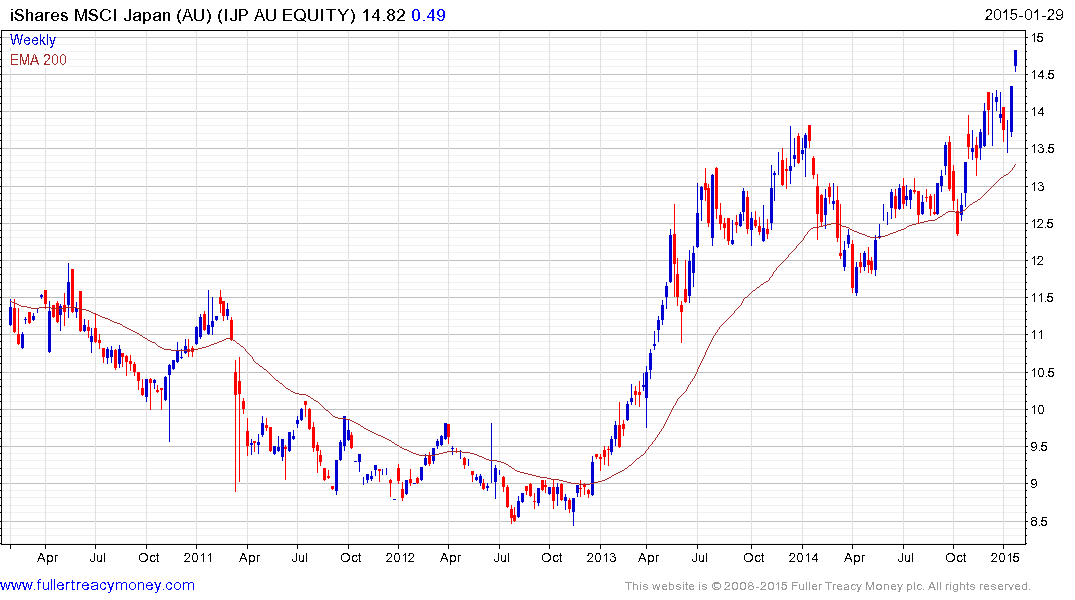
For example the below China and Japanese focused funds have outperformed the domestic market by a considerable margin. Considering the medium-term potential for the Australian Dollar to not only weaken but to stay weak, international markets have potential to continue to outperform in AUD terms.


